Interview: 'Bean Bandit' OVA Team on Car Action, Natto-Flavored Candy, and More
Nov 12, 2019 10:50 AM (PST) by Congress | Forum Discussion
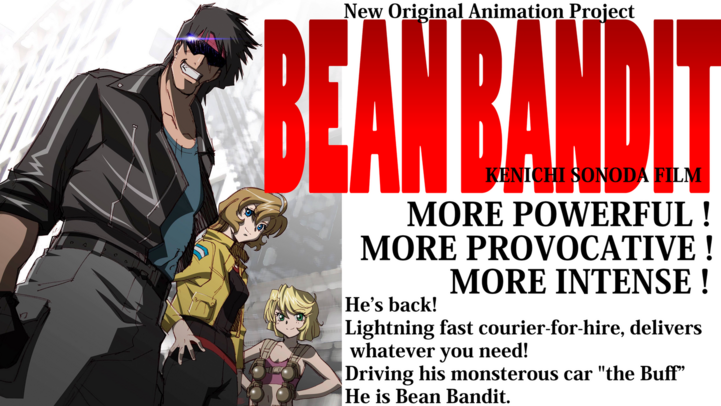
Kenichi Sonoda, the veteran mangaka behind Riding Bean and Gunsmith Cats, announced in 2018 that he would be launching a Kickstarter project for a new anime OVA titled Bean Bandit. The project raised ¥23,343,872 (about $215,000 USD at campaign close), and completed Blu-rays are expected to ship some time this month.
During Anime Central 2019, MyAnimeList had the opportunity to join a press conference with Kenichi Sonoda and two other members of the Bean Bandit team, composer Marco D'Ambrosio and animation supervisor Shujirou Hamakawa (also known as Shizulow.HA).
Interviewer A: What do you think is your biggest strength—the strongest contribution—that you've been able to put into Bean Bandit so far?
Sonoda: When I look at Bean Bandit and my past work, it's clear that I really am a huge fan of US action, dramas, and movies. I've been doing action for 30 years, but every time, I feel like there's more that I can do, that there are more challenges to tackle. And so, with Bean Bandit, I really feel like I tried to take that extra step and add things that I'd been wanting to do for a long time, as well as things that I thought of on the spot.
Also, when I did Riding Bean as an anime, I was working with anime creation companies. After that, I returned to being a manga creator where I focused on a lot of gunfights and car action sequences with my manga, Gunsmith Cats. I had various influences from that experience and from other things I've seen over these past few decades. These techniques and ideas for gunfights and car action sequences are all things that I've tried to learn from and reflect on in Bean Bandit.
Interviewer B: Will you ever continue the Bean Bandit manga, as it is still unfinished?
Sonoda: The magazine that was publishing that manga series unfortunately went out of business. If we were to try and revive that manga series, it would actually be quite challenging. I would prefer to start something new... but yes, there are currently no plans to revisit or complete that series at this time.
Interviewer C: How do you think things have changed since you began working in the industry? How do you adapt yourself to the new advances in technology that have occurred since you started?
Sonoda: Apologies if this isn't the answer you're looking for, but for the work that I do on a day to day basis, it actually hasn't evolved at all.
And even if I'm working with a company that has a lot of digital technology incorporated into their production process, I'm actually not really affected by that. I still just draw by hand, give it to them, and say, "okay, take it from here." I'm sure they incorporate lots of amazing technologies into their production, but the work that I personally do remains the same.
There is some CG incorporated into Bean Bandit that you will see, particularly with the cars when they are moving around, but it's really just a little bit of CG. In fact, even for the car sequences, more than half of them are hand drawn, so it's really just a very small incorporation of CG.
Interviewer D: Mr. D'Ambrosio, what was it like to work on sound design for Jojo's Bizarre Adventures, a project that is inspired by many different musical properties?
D'Ambrosio: On Jojo's Bizarre Adventures, I actually was the composer, but I worked closely with the sound designers at Skywalker Sound. It affected the music a lot in the sense that the characters are named after various rockstars and these obscure references, and I tried to bring that into the music in subtle ways. I think there was a character named Vanilla Ice at one point, and I did a Vanilla Ice-y kind of thing. So, a lot of times, that inspired the musical style. For example, with Dio, there was a sort of atonal heavy metal vibe to it. In short, it inspired me and affected me just by knowing their names and understanding that aspect. I hope that answers your question.
Interviewer D: Oh, absolutely. It must be a crazy project to work on.
Interviewer E: "Bizzare," even.
D'Ambrosio: (Laughs) Yeah, it was definitely fun.
Interviewer E: Is the Kickstarter model viable for new creators, or do you have to be an established creator to really make it work?
Sonoda: I think the important thing about Kickstarters is that your supporters and backers need to be able to imagine, specifically, what is going to be created and what they can expect from supporting the Kickstarter. I'm lucky that I've worked on many things in the past, so people know my style, and it may be comparatively easier for them to imagine what they can get from supporting Kenichi Sonoda's Kickstarter. But for a new creator, it might be more difficult to imagine what is going to be created.
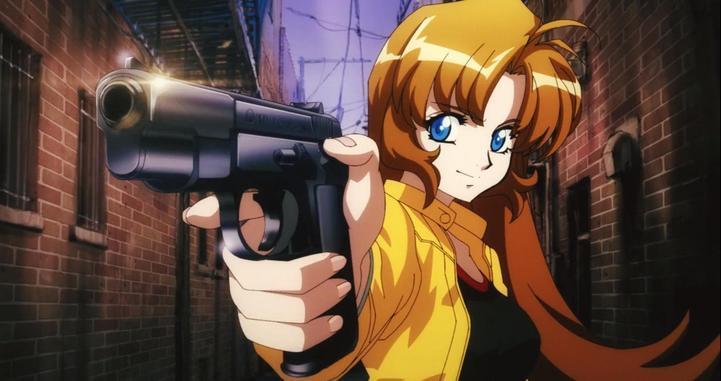
Interviewer B: Do you feel more pressured to deliver because of the fact that you used the Kickstarter model?
Sonoda: While I truly appreciate the support of the fans, it's very important that I follow my own style in all aspects of the work when I'm creating something and assigning my name to it. I greatly appreciate the support of the fans, but when I'm actually making something, I'm very selfish and follow my own instincts.
However, there was a work that I worked on for AnimEigo called Digital Masters, and it was a new manga. Particular backers of that manga had the chance to become characters within that manga. I took special care to make sure that their likenesses were portrayed well in the manga and that they had really cool things to do... and if they got killed, that they got killed in a really cool way. In fact, there were even requests from some of the backers, saying that they would like to be killed in a particular way.
And in this work as well, there are backers that appear inside the work. We've been very careful about how they appear and how they die—if applicable.
Interviewer F: I want to be in it!
Sonoda: I'll be sure to give you a good death. (Laughs)
Shuzilow: (Rubs hands together) But show us the money first!
All: (Laughing)
Interviewer D: Sonoda-san, having worked on anime such as Otaku no Video, which is about anime fandom, would you say that fandom has changed since then? In addition, how would you compare Japanese and American fans?
Sonoda: Over these last thirty years, the technology, the way that expression is made on film, and anime styles have all changed. However, I think the fans have not changed at all. At the end of the day, the role of the creator is to answer what the fans are asking for. That really hasn't changed.
And as for Japanese and American fans... they're the same as well.
Interviewer G: Have you experienced any changes in the manga and anime industry as American anime fans have become a larger demographic?
Sonoda: I don't think it's so much that any changes have been affected on the industry. It's more that there are simply new options available. We are embracing the new and also respecting the old traditions of Japanese anime. We are taking these new styles and adopting them in ways that make sense.
The Japanese manga environment has always been affected by American comics as well. There are manga in Japan that are affected by U.S. superheroes, for example. There's one running in Shonen Jump right now called Boku no Hero Academia, and that one is, I think, particularly influenced by American superhero comics.
Interviewer E: Bean Bandit is a throwback to Gunsmith Cats, which heavily involves car action, a genre that doesn't get a lot of play nowadays. What are some other genres that you would like to see make a comeback?
Hamakawa: There are two reasons that I really wanted to do Bean Bandit now. First, Sonoda-san looked like he was kind of bored... and I thought it would be a good time to do something. The other thing is that the gun action and car action genres are particularly hard to portray in anime, and it sounded like a good challenge. I thought that if we did it with Sonoda-san now, it would be a really awesome opportunity to bring these genres to anime again. I'm always looking for genres that are particularly hard to render into anime.
Sonoda: In Japan, there are very few manga that portray car action sequences—not just races, but the crazy things that you see coming out of Hollywood. And so, as a huge fan of these Hollywood action sequences, I really want to bring more and more of them to Japanese manga and anime. I think this is a test for me, a mission of sorts.
Hamakawa: (Whispers) But of course it takes money, lots of money. (Laughs)
Sonoda: And race games, particularly games like "Gran Turismo," are great at depicting this super realistic racing. However, the cars never really get damaged. You never really see them get damaged in realistic ways. I think that's also a mission of mine, to portray realistic car chases and car crashes.
D'Ambrosio: For me... I'm very excited about it, in terms of this genre coming back. I was born in Italy and I moved to the United States in 1969. I grew up on 70s, 80s, and 90s cop dramas and detective shows, so I was really excited about the opportunity to work on something like that. All those retro shows like Hunter, Booker, SWAT, Cagney & Lacey... I could go on forever. And from a musical standpoint, cool, retro funk rock is very exciting, and I'm really excited to do that. So... I wish I could think of another genre right now that I would be excited about, but this... this is it.
And this is an indirect answer to the first question, but what I think I can bring to this project is a love for that style, the one you see in all those films, and make this one as authentic as possible in that way.
Interviewer A: Do you feel that music from the past affects the work you're doing for Bean Bandit? Does this bring nostalgia back with it?
D'Ambrosio: Oh yeah, totally. There are so many things that I can think of, whether it's Chicago Blues or... oh, you know, all the things that you could wrap around this. There's that sort of funk element, there's Chicago Blues, there's a rock element, there's a blues element... And then let's step it up a bit. Let's go into the 80s and 90s, where you get things like Miami Vice and that early electronica stuff that I'm trying to introduce into this anime as well. So it's all about these things that I'm trying to "fold" in.
Interviewer B: I've been to your candy shop in Kumomoto, and lemon is my favorite flavor. Are there any new flavors on the way?
Hamakawa: (Points at Sonoda-san) It's candyman!
Sonoda: (Laughs) Yes, so, I actually developed the lemon candy at Sonoda-ya. And yes, I am thinking of new flavors... but they're currently secret.
Interviewer B: The packaging has these little cute girls that you can collect... so I look forward to trying new flavors from your store.
Sonoda: Thank you very much. I will do my best to make sure I don't disappoint!
Hamakawa: Shall I think of some flavors for you? Like natto?
Sonoda: Natto?!
Interviewer B: Ahh, no!
All: (Laughing)
Sonoda: The lemon flavor was actually the first new flavor at Sonoda-ya in one hundred and fifteen years. But yes, we will continue to do our best to bring wonderful flavors to you!
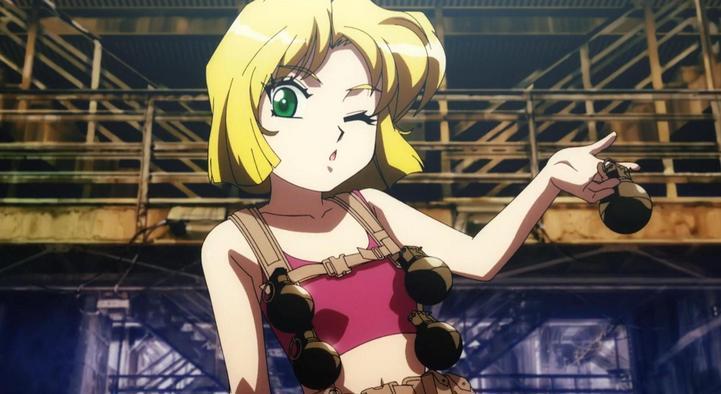
Interviewer A: How have you been reacting to the reception here at ACEN? And to the feedback from fans that you've encountered?
Sonoda: Every time I come to Anime Central, the fans welcome me so warmly. After doing this many times, I've actually come to think that, "hey, I'm actually a pretty big deal." (Laughs) All in all, I am very grateful for the warm welcome that I get at Anime Central.
Interviewer D: Have you found inspiration in any recent American Car Movies? Baby Driver, Fast and Furious, and so on?
Sonoda: I actually love Baby Driver, so yes.
Interviewer C: What about older American car chase scenes, movies like The Seven-ups or anything else from the old-70s?
Sonoda: I think the biggest influence is Blues Brothers. Or Bullitt, starring Steven McQueen. Oh, and Vanishing Point... and Knight Rider.
And I did watch the new Knight Rider TV series, but it didn't really do it for me.
Interviewer A: Have you ever had any personal experience joyriding that may have influenced Bean Bandit?
Sonoda: No. No, I haven't.
Hamakawa: He actually doesn't have a license.
Sonoda: It's not that I enjoy the idea of driving. I just enjoy car action. I think if I actually drove, I would immediately get into an accident.
Hamakawa: And he's already violent enough at work, so I shudder to think how violent he would be while driving on the road. (Laughs)
Sonoda: Actually, I used to ride a motorcycle... but even then, I had quite a few accidents, so I just gave up on driving. I actually broke my clavicle riding on my motorcycle, and it was while I was recovering that I thought up of Riding Bean. That was the inspiration, in a way.
Interviewer C: Whether it's in composition or animation, who and what are your inspirations?
D'Ambrosio: There are two parts to that. One is "my heroes," as in composers, and then the subject material. I get inspiration from both. I primarily get inspiration from whatever story I'm in and whatever my assignment is in terms of genre, style, or period. I dig into that and get inspired from that. It's always exciting to sort of jump around and try different things. And then, just look at the work of the heroes whose shoulders I stand on, guys I look up to, going all the way back to the early German composers, Franx Waxman... Jerry Goldsmith, and even the modern guys. I was just at a dinner in Los Angeles where Alan Silvestri was there. And how could he not be an inspiration? He just made 1.5 billion dollars! On top of that, Lalo Schifrin was also there. He spoke, and I got knots in my throat just by being around those people. And so, the mentors and the masters of my profession, and the work itself—that's where I get my inspiration from.
Hamakawa: One thing that I was inspired by, and this is kind of older animation... but the works of Don Bluth. There's this really flowing motion style—and we don't really see that a lot in Japan—where animation is more a series of very important still images. And that kind of flowing animation is something that I would like to incorporate into my work.
Sonoda: The creators that I'm inspired by are, of course, Hayao Miyazaki and Yasuo Otsuka. Yasuo Otsuka is really good at pioneering the animation of cars and mecha, and it was when I was watching Otsuka-san's work in elementary school that I was inspired to learn how to draw mecha myself. That led to me gaining the ability to animate cars and mecha.
Yasuo Otsuka was also the animation director for the original, and very first, Lupin III, as well as The Castle of Cagliostro. And that car chase scene at the beginning of The Castle of Cagliostro, where they're riding the Fiat, and everyone's chasing it—that was also Yasuo Otsuka. He was the director for that car chase.
So I actually had a chance to meet Yasuo Otsuka during the creation of Riding Bean. He's a great person, and we got to talk about a lot of different things. I actually got to ride in the "Mighty Might" with him, which is an old, classic aluminium jeep that Otsuka-sensei owns and drives. And, actually, Otsuka-san's famous for being the biggest jeep fan in all of Japan. He's the "Jeep Master," the "King of Jeeps."
Interviewer E: You're renowned as, shall we say, a firearm enthusiast. What are your favorite types of firearms to draw, and how hard do you push your animators to make the guns look accurate to their real-life equivalents?
Sonoda: In order to ensure accuracy, I put all the details in the storyboards. Then, I also bring in my model guns and my air guns into the studio. I show them to the animators and say, "this is it, this is what it should be like." Of course, in Japan, those look very realistic because everyone knows they're fake.
Hamakawa: When Sonoda-san doesn't like the animation that's coming out, he will throw it all away and do it himself. So he's actually very problematic for those of us that are working on the frontlines.
Sonoda: I haven't thrown anything away! And rather than telling someone over and over again how to draw something, it's easier to just draw it for them and say "like this." But if I do too much of that, I start to get a reputation like Hayao Miyazaki's or something. Of course, all the animators are aware of this.
Interviewer H: The charm of Chicago that originally inspired you to do Riding Bean—has that changed much for you in recent years?
Sonoda: The reference materials that we have in the studio... they are getting quite old, so if I look at those materials and compare them to the way the city is now, I can definitely see things that have changed in some ways.
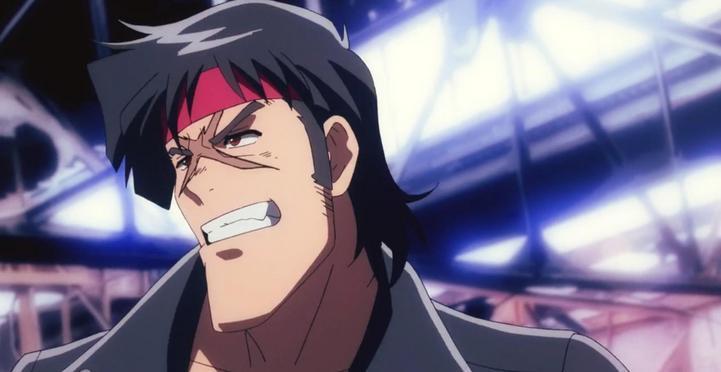
Interviewer I: Hamakawa-san, how different is the environment when you work on video games compared to the environment for anime?
Hamakawa: I was actually involved in game creation pretty long time ago. At the time, there weren't that many people involved in the process, but with animation, especially in the modern day, there are many, many people involved. That means, in order to get your opinion reflected in a work, you have to take many people's feelings into account, and you have to get the entire team motivated to understand your opinion. And so, in that way, working in animation is more challenging than the work I did in games.
Interviewer G: As someone in the anime and manga industry, what is your reaction to Hollywood adaptations of anime and manga, such as Ghost in the Shell or the upcoming Cowboy Bebop series on Netflix?
Sonoda: I think there are really good live-action adaptations of anime and manga. Some of them are done really well, but they sometimes miss the mark. Or, if they don't stay true to the original, they can just go completely off the rails. And then it just becomes a real mess. So I think they need to be careful, especially for big or famous titles like Dragon Ball... (Laughs)
Hamakawa: One thing that's recently been in the news with regard to live-action adaptations of anime and manga is the complaints about whitewashing. I really wish that people would stop focusing on that aspect and stop bad mouthing films so much because of that. I honestly think that we should look at trying to get the right, or good, actors and actresses for those roles, regardless of their nationality. People should enjoy the films for what they are.
Interviewer C: I'd like to ask about The Wings of Honnêamise, which is a personal favorite film. What was the inspiration behind the world created for it?
Sonoda: It's a bit difficult for me to answer this one. For The Wings of Honnêamise, I was mostly involved with the setting, so it was mainly Gainax and their staff that drove the production. And so, it's a bit hard for me to answer this question about the background and the world.
Interviewer C: What about the technology? The double-propellor planes, for example?
Sonoda: It was really fun and interesting to watch The Wings of Honnêamise, because you have this hero who's trying to squeeze every ounce of power that he can out of his propellor-driven craft, while his enemies are all in jet fighters. It was just really interesting seeing them go against each other with these very different technologies. It was very fun to watch.
And from an animation standpoint, animating the propellers was really interesting. We initially used some computer graphics to put in some wire work there and some simple CG just to rotate the propellers. The animators came in after that and did actual hand-drawn line drawings based on the motion of those CG-generated propellers.
Interviewer A: Are there any exciting new developments with Bean Bandit that you may be able to share with us today?
Sonoda: I'm working towards specific ambitions and goals that we have. And... can I say it? Well, I really hope we can maybe do a U.S. TV series for Bean Bandit.
Hamakawa: Give me money!
Interviewer I: For Mr. D'Ambrosio, you're credited for an acting role in Jojo's Bizarre Adventures. What was it like to voice act in the show?
D'Ambrosio: Well, that's called "personal nepotism." The original voice track was in Japanese, and we were hired to do the English version. They were short a few actors on some occasions. They were short a prisoner one day, they were short a zombie another day... and I also have to credit my wife, Terry, who's here in the room. The woman who gets sacrificed on the altar, the big moan—that's her. She's credited as well. I think I got my cousin Scott in there too, and I was on the way to getting the whole family in there. But yeah, it was fun. I considered quitting my day job for a second. (Laughs)
Hamakawa: If we have a TV series, let's make sure we get some performances by Terry and Marco!
Interviewer A: Piggybacking off of that, with the day job comment—did you guys ever consider another job before you got into your current career?
Sonoda: Ever since I was a kid, all I ever did was draw manga. There was no way I had the skills to go to a regular college, so I went to a design school, did character design... and I really think I had no training for any regular job other than drawing manga or anime. There's never really been anything else for me, so here I am now.
Hamakawa: Same. (Laughs)
We actually went to the same design school, so Sonoda-san is actually my senpai.
D'Ambrosio: The way I see it is that everything you do kind of leads you to where you are, though you might not see it at the time. My mom told me that, when I was born, the church bells rang, and I started to cry, so she knew I was going to be a musician or something. But, as you know, it's not the easiest path. So, when I was going through school... I started playing trumpet when I was ten years old. I was dead set on being the principal trumpet player for the Boston Symphony... until I was in high school and I saw a movie called Blade Runner, the original Blade Runner, where I heard synthesizers and orchestra playing at the same time. It was like a choir of angels showing up, the light shining around me—I went, "that's what I want to do!" Any major university nowadays will have a great film scoring program, but there were no film scoring programs at the time, so I kind of took this winding road. I wound up being a double major in college. I majored in engineering and music, and at the time, I just wanted to make music... but I appreciate it now, because that led me to work at Skywalker. I went from working at Skywalker to eventually being hired to do music for guys at Skywalker, which led me to scoring full-time. And all that tech experience... I didn't know it at the time, but it's so vital to our industry now, as we're all using computers. We love to work with musicians, but a lot of the time, we're just locked up in a room with our machines, and that's how we make music. So yeah, that's been my path.
Interviewer A: Would you say that it would be beneficial for people entering the industry to become more dynamic—to have a multitude of skills—instead of focusing on just one?
D'Ambrosio: Yeah. Just try many hats, try many things. It's not just skills, but read poetry, go for a walk, do yoga. Try as many different things as you can. You might think that it's not important, that it doesn't make a lot of sense, but it all informs your direction. I mean, look at me now—I spent way too much time watching 70s and 80s television, and now I have that in my blood. Maybe I can do a good job on this show. So yeah, absolutely.
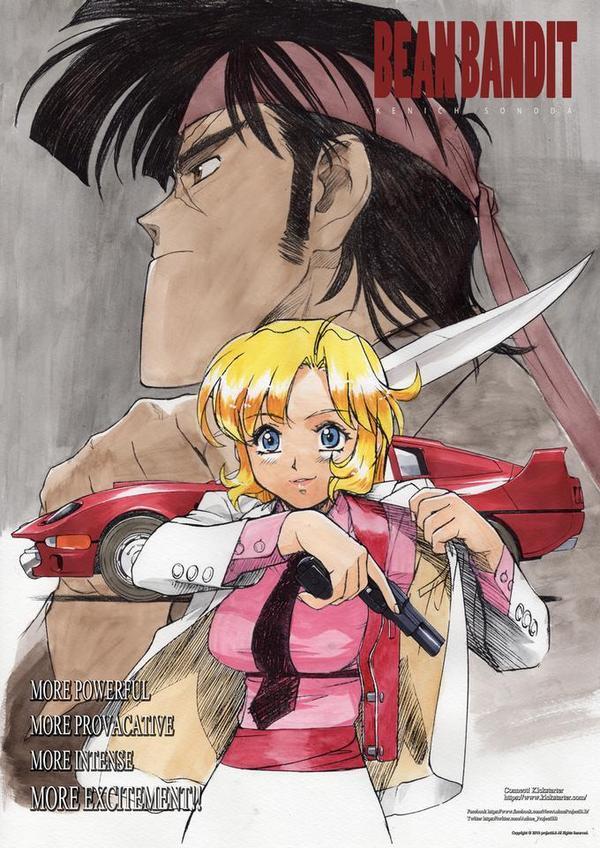
Interview was conducted in a conference setting through an interpreter and has been edited for clarity.
Related Database Entries
Related News
- Q3 2024 Anime & Manga Licenses [Update 8/25] AMP
- Jun 28, 2024 2:57 PM (PDT) by Snow
- Interview: 'Tate no Yuusha no Nariagari' Team Talks Music and Direction AMP
- Jul 17, 2019 11:24 AM (PDT) by Congress
- Interview: Kinema Citrus Staff Reflect on 'Made in Abyss' AMP
- Aug 23, 2019 1:17 PM (PDT) by Congress
- Interview: Atsushi Nakayama and Ryoma Ebata Talk 'Tensei shitara Slime Datta Ken' AMP
- Jul 30, 2019 11:26 PM (PDT) by Congress
- In Pursuit of Egoism: The Essence of 'Blue Lock' AMP
- Oct 24, 2024 10:33 PM (PDT) by Kineta